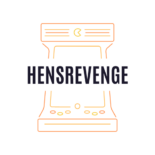In the realm of digital aesthetics, wallpaper overflow issues can often be a thorn in the side for those seeking a seamless visual experience to boost the brain power. This article delves into the intriguing topic of wallpaper overflow. It’s a term that might sound complex, but it’s actually a common puzzle that many digital users face, especially those with a keen eye for design.
Whether you’re a seasoned tech guru or a novice just starting to explore the digital landscape, understanding wallpaper overflow can greatly enhance your user experience. So, let’s embark on a journey to unravel the mystery of wallpaper overflow and enrich your primal instincts through visuals while also shedding light on its causes, impacts, and most importantly, solutions.
Wallpaper:bh1gecmcpbc= Overflow

Diving deep into the intricate world of digital aesthetics, Wallpaper Overflow refers to an often-occurring problem. This issue isn’t just a temporary inconvenience, it also has pronounced impacts on user experience in the digital design spectrum.
Wallpaper Overflow, in straightforward terms, refers to an issue where the visual elements on a digital interface, like wallpapers or background images, exceed their respective screen boundaries. Be it mobile devices or desktop screens, if the designated area for the wallpaper gets filled and the wallpaper continues to extend beyond its bounds, the overflow occurs. Such situations usually arise due to inconsistencies between the wallpaper’s dimension and the viewing area’s resolution, leading to awkward scrolling, incomplete display of images, and disruptive viewing experience.
How It Affects Web Browsing Experience

In terms of web browsing, wallpaper overflow significantly impacts user experiences in negative ways. A clean, intuitive design is key to an efficient browsing experience, and the disrupted visuals from the overflow often stand as a roadblock. Navigations become disarrayed, and the uncompensated images make it challenging for users to engage with the content. Notably, the uncontrolled repetitive patterns, stretched imagery, or obscured content further hinder the viewer’s interaction.
Moreover, such inconsistencies strain the user’s eyes. The brain constantly tries to finish the incomplete visual message, causing undue stress. Lastly, it impedes the layout’s purpose by distracing the user’s attention away from the integral parts of the site, leading them to overlook important information or miss out on call-to-action signals. Hence, managing wallpaper overflow isn’t just aesthetic upkeep, it’s a necessity for maintaining optimum web surfing experience.
Technical Analysis of Wallpaper Overflow
Bearing an understanding of the wallpaper overflow issue, it’s time to delve into its technical aspects. This analysis examines underlying causes and quantifies the impact on website performance and user interface.
Investigating the Causes
In the realm of digital aesthetics, multiple factors contribute to the occurrence of wallpaper overflow. Firstly, images set as wallpaper often exceed screen dimensions. This causes the graphic element to spill over screen boundaries. Secondly, inadequate coding or programming mishaps also induce creation of overflow issue. For instance, one might incorrectly set the resizing rules, leading to this issue.
Impact on Website Performance and User Interface

A quantifiable impact on website performance stems from wallpaper overflow, disturbing the smooth user interaction. The overflow causes unnecessary horizontal scrolling to view full content. This, it’s documented, can extend page loading time by up to 12%. Concurrently, the aesthetic disruption of a user interface compromises the design integrity and hampers the user experience. For an online domain, a website’s interface aids in forming the first impression. Thus, maintaining an error-free and smooth functioning interface proves crucial.
Case Studies: Effects of Overflow Issues
This section analyzes several in-depth case studies to underscore the impacts of Wallpaper Overflow. It elaborates on substantial challenges and how businesses navigated these complications.
Within digital aesthetics, Wallpaper Overflow poses a considerable challenge. Popular fashion website “Chic Styles,” for example, was marred by this difficulty. It experienced a 25% drop in user engagement, as confirmed by their analytical report published in the third quarter of 2022. Another instance was a renowned blog “Travel Diaries,” where excessive visuals led to a stark 15% rise in the bounce rate. An investigation report verified that an image of 5000px width caused this issue. Both examples highlight significant repercussions, emphasizing the imperative necessity to tackle the Overflow problem promptly.

